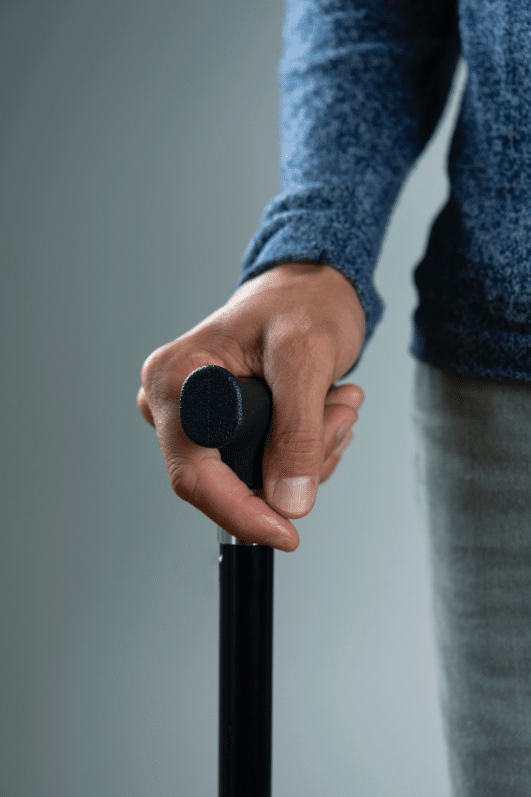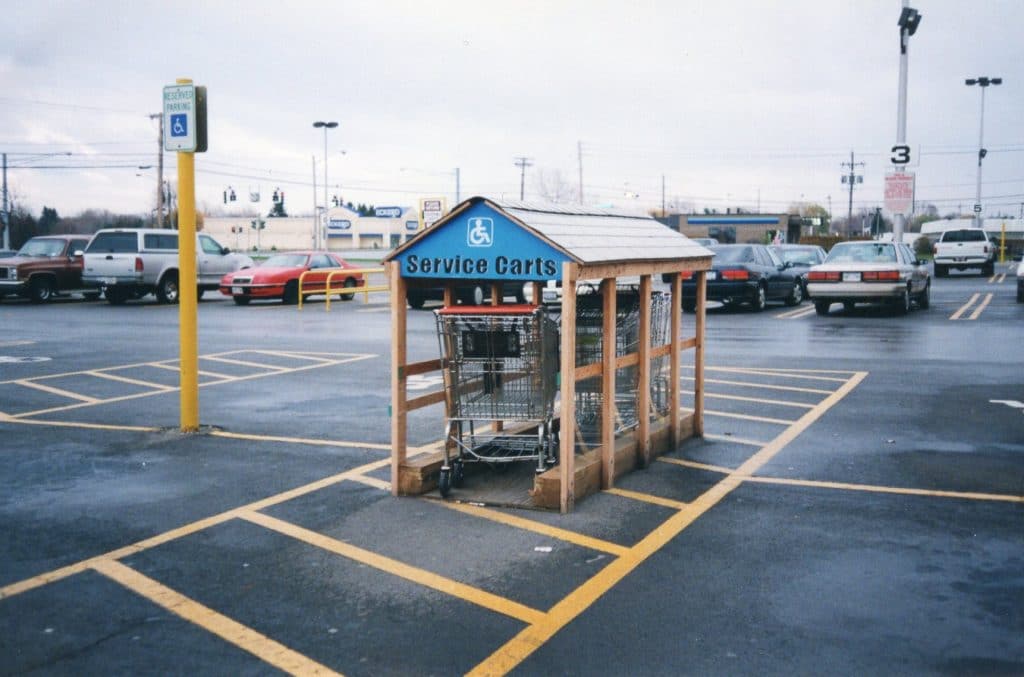
I have tried to write this blog for a very long time and have kept getting pulled in so many directions about what might be helpful to someone seeing or hearing it.
The starting idea was write about “How do we know when to start using a wheelchair“. But I realized the conversation really needs to start well before that.
The CDC reports that 13.7 percent of Americans have a mobility disability with serious difficulty walking or climbing stairs. Surveys indicate that 2/3rds of individuals over the age of 65 have some degree of mobility impairment. Most of these individuals do not end up using a wheelchair, or at least not most of the time.
Certainly, some sudden issues – accidents, strokes, etc. can quickly make it necessary to start using assistive devices to get around. In these situations, decisions about what is needed can be pretty clear and fairly indisputable.
But for many of us dealing with longer term illnesses or who are facing the effects of just getting older, losing the ability to walk can creep up on us more slowly.
For many of us, our backs, knees, hips start to “wear out” and cause pain or weakness. When treatments, surgeries or physical therapy aren’t enough, the idea of using assistive devices can start to look more interesting.
There is a real resistance to admitting we can’t walk unassisted. Even in nursing homes we see residents continuing to try to move around without a cane or a walker, often risking more serious injuries.
Doctors and physical therapists routinely encourage people to keep trying to walk. And as a neurologist told me several times, “keep doing everything you can for as long as you can”.
But when does trying to do everything the old way become too difficult or too exhausting or too risky?
There is no right answer! It will almost always be a balance between what we would like our situation to be and seeing it honestly as it is.
I spoke with a number of people with varying levels of mobility difficulty about how they evaluated their options and made the choices that they did. Here is what I heard –
- Wheelchairs are scary. For a lot of people, not walking is a major admission of something – “I am not young anymore” “I’m not the person I used to be or want to be” “I don’t want to be considered a ‘handicapped person'” “I don’t want to be seen as weak or vulnerable”. Admitting that we need a wheelchair, or any kind of mobility aid can create fears of what it means and what comes next. Fortunately, most of the wheelchair users we spoke with said that life was different, but not generally worse and in some ways better or easier since starting to use a wheelchair.
- We may be very good at hiding our challenges. We “cleverly” find explanations for why we can’t attend activities that require significant walking or standing. But that only works until we’ve fallen a few times or found ourselves sitting out too much of life.
- And sometimes our needs are more visible to others than they are to us. We may “soldier on” until someone else tells us that the time has come. A spouse, a doctor, our child. Interestingly, for me, one trigger event was when an astute ticket agent at the airport saw my struggles and ordered a wheelchair for me despite my protestations. Once I realized how much safer and more comfortable that was, I used that option for every trip.
- Good days and bad days; good places and bad places– For so many of us there can be real value in reminding ourselves that choosing to use a special parking space, or an available wheelchair does not signal a permanent change. Nor does it indicate that you are “faking it” or “gaming the system” because your abilities are not “that bad” all the time. If you need it today you need it today. Today’s less-ability is not better or worse than anyone else ‘s. It is just what you are experiencing at this time.
- There are no good assistive device roadmaps – Choosing the best assistive device can be complicated – and expensive. Almost everyone who starts using an assistive device is introduced to a whole new world – with products, features, brand names, stores, dealers that they didn’t know before. Often, we don’t even know where to start looking. Beyond that, we find that no one solution works for every situation we may face. Because of this even the best doctors, physical or occupational therapists can only advise us so far. It is helpful to try using something before you buy it. Depending on where you live there may be a “durable medical equipment” dealer nearby where you can see and touch different products. And there are numerous catalogs and internet retailers. Some of these may allow returns after an initial trial. In addition to for-profit retailers, there are associations and government agencies that may connect individuals with pre-owned and renovated equipment. Check with your local CIL (Centers for Independent Living) or an Area Agency on Aging for a start. In the end, almost everyone buys some devices that work well for them and some that don’t. In hindsight we wish we had known more. But isn’t that true of many parts of life?
- Nothing has to be everything for you. You can use a wheelchair when you need it and a walker or a cane on the days when you are able. Every option has pluses and minuses – Thinking about how and where a device will be used can offer good direction about which features are right for you and which are not. Many of us ultimately have several devices in our collection and may choose to use different ones in different situations. I own a rollator walker, manual wheelchair, small portable power wheelchair and a larger wheelchair for the times when more support is needed. “Any port in a storm” The old sailing expression describes how sometimes any solution is better than no solution. Almost everyone who has experienced problems with walking has stories of the solutions they found to get-by – Grocery carts make good walkers. Even pushing an empty wheelchair can work as a walker in certain circumstances.

- What is the value of advice? Everyone’s advice to you is shaped by their own experiences and incentives. Manufacturers’ representatives can have sales incentives. That doesn’t mean that their advice isn’t good, but it often is limited to their company’s product lines. Medical offices may only know the products that have been presented to them. Friends and family typically know only the products they have tried. And, we all have to deal with the reality that different insurance providers approve coverage for different things. While having “too much information” can be overwhelming, many of us have found that speaking with others (friends, support groups and even electronically in chat rooms) can be very helpful in giving us the answers we seek. We often don’t know, in advance, what can learn from others’ experiences.
- In the end, your best option is knowing and trusting your own truth. – Honestly read your own abilities, recognize your own needs (as they are at any specific time) and use the available tools when they are appropriate. – And, Yes, do as much as you (safely) can for as long as you are able!
Admitting that we need some help, finding good resources and using the available tools can be very freeing. Instead of struggling to get around we can save our energy for more productive and rewarding activities. Rather than fighting to prove that we “can still do it” the old way, we can find new ways to stay fit while protecting our bones, joints, energy, happiness, and sanity!

 This website is designed to give you practical tips, advice and links that will support your journey to seek out the solutions that work best for you.
This website is designed to give you practical tips, advice and links that will support your journey to seek out the solutions that work best for you.